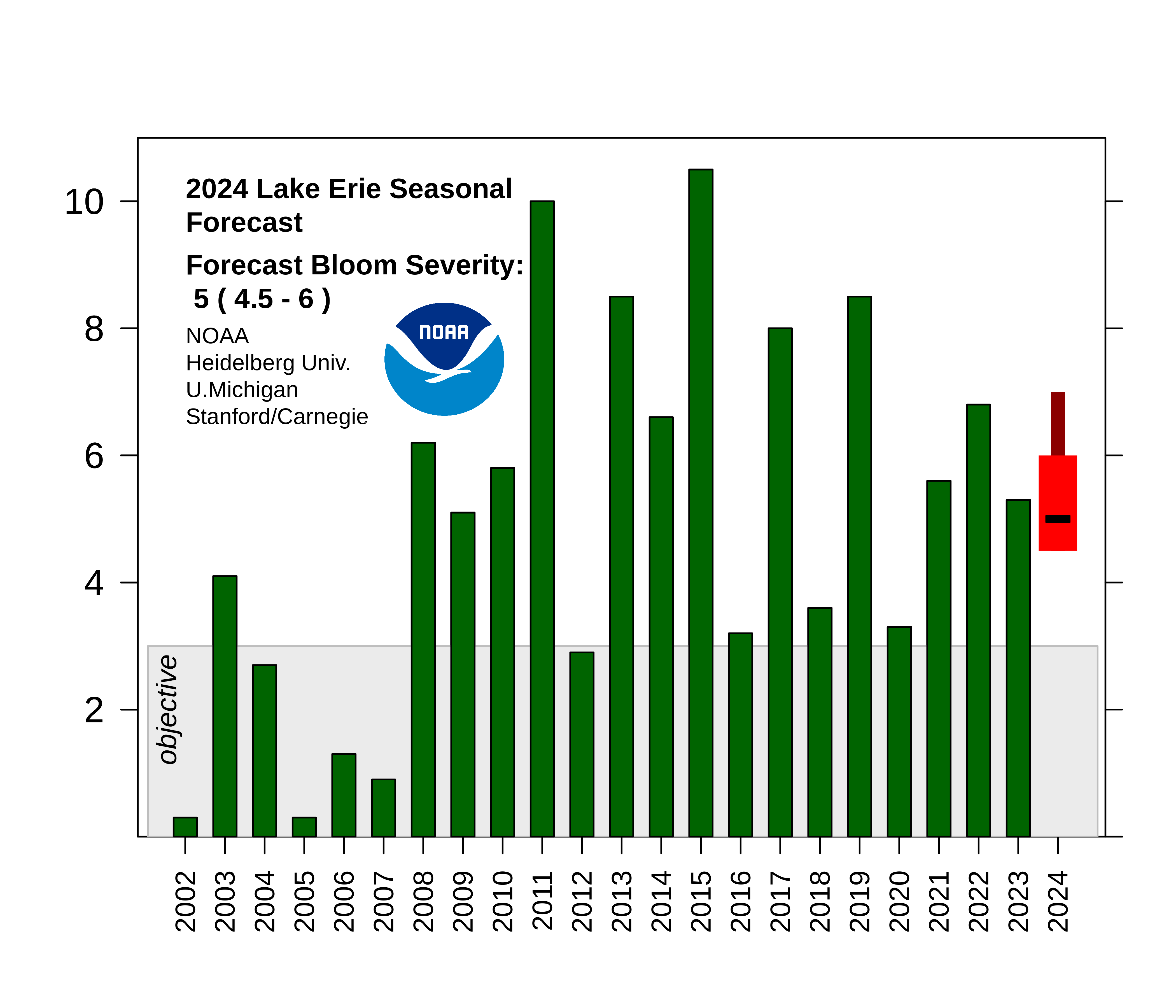
Credit: NOAA NCCOS
NOAA and its research partners are forecasting that western Lake Erie will experience a moderate to larger-than-moderate harmful algal bloom this summer. This year’s bloom is expected to measure 5, with a potential range of 4.5 to 6. NOAA expects a start of the visible bloom in early July. The duration of the bloom depends on the frequency of wind events in September, which experts cannot predict this far in advance.
Lake Erie blooms consist of cyanobacteria, also called blue-green algae, capable of producing the liver toxin microcystin which poses a risk to human and wildlife health. Such blooms may result in higher costs for cities and local governments that need to treat drinking water; prevent people from enjoying fishing, swimming, boating, and visiting the shoreline; and harm the region’s vital summer tourism economy.
The severity index is based on a bloom’s biomass — the amount of algae— over a sustained period. Blooms over 5 on the severity index have substantive impacts, with noticeable areas of scum on the lake, and have larger areas and duration of impact. Blooms over 7.5 are the particularly severe blooms, with extensive scum formation and extensive coverage affecting the lake. A severity below 3 is the goal of the Great Lakes Water Quality Agreement. The largest blooms occurred in 2011, with a severity index of 10, and 2015, at 10.5.
The size of a bloom is not necessarily an indication of how toxic it is. The toxins in a large bloom may not be as concentrated as in a smaller bloom. NOAA is actively developing tools to detect and predict how toxic blooms will be.
The Lake Erie Harmful Algal Bloom Forecast website provides predictions and visualizations of where the bloom is located within the water column. In addition to the early season projections from NOAA and its partners, NOAA also issues HAB nowcasts/forecasts during the bloom season. The nowcasts provide the current extent of the bloom while the forecasts provide a 5-day outlook of where the bloom will travel and what concentrations are likely to be seen, allowing local decision-makers to make informed management decisions.
Click here to subscribe to the Lake Erie HAB Forecast email updates.
Click here to view the NOAA Press Release.
